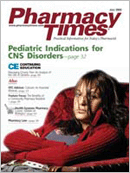Publication
Article
Pharmacy Times
Athlete's Foot Treatments
Author(s):
Athlete's foot (also known as Tinea pedis) is a fungal infection usually caused by Trichophyton rubrum, T mentagrophytes, or Epidermophyton floccosum.1 Approximately 26.5 million individuals in the United States are afflicted with athlete's foot annually,2 and men tend to be affected more than women.
Athlete's foot generally occurs in 3 forms3:
- Interdigital type: This is the most common form, and it usually occurs between the fourth and fifth toes. It is characterized by scaly, peeling skin.
- Moccasin type: This form can cause scaly, thickened skin on the sole and heel of the foot. The toenails may become infected as well.
- Acute vesicular type: Lesions or blisters can appear on the foot and between the toes. A secondary bacterial infection often may result.
Treatment
Most mild cases of athlete's foot can be treated with the use of a nonprescription topical antifungal medication. In general, the majority of patients begin to see some form of improvement within 1 week of treatment. Even when improvement is shown, it is still recommended that treatment continue for 1 to 3 more weeks, depending on the type of athlete's foot.2
Various OTC topical antifungals are available in ointments, creams, sprays, and powders (Table). Pharmacists should encourage patients using these products to follow the recommendations listed by the manufacturers. Patients with diabetes always should seek the advice of their health care provider before trying to self-treat any foot problems. All patients should be encouraged to consult their health care provider if the use of topical nonprescription antifungals is not effective within the recommended time frame of treatment.
In severe cases, individuals should seek the attention of their health care provider for proper treatment. In many such cases, prescription topical and systemic antifungals may be necessary.
Recurrent infections may be a sign of another underlying medical problem and may need further medical evaluation.
Prevention
Because athlete's foot tends to recur, prevention is the first step in avoiding recurrence.
Some precautionary measures can be suggested to patients to decrease the chances of developing an initial infection or a recurrence.
- The feet should always be kept clean and dry. The area between the toes should be dried well after bathing and swimming.
- When wearing enclosed shoes, such as tennis shoes, cotton socks should be worn to absorb foot perspiration
- Patients should wear sandals or shoes that allow the feet to breathe
- Patients always should wear some form of foot protection (eg, shower shoes) when using public shower facilities, such as at a gymnasium or health club
Ms. Terrie is a clinical pharmacy writer based in the northern Virginia area.
For a list of references, send a stamped, self-addressed envelope to: References Department, Attn. A. Stahl, Pharmacy Times, 241 Forsgate Drive, Jamesburg, NJ 08831; or send an e-mail request to: [email protected].

Newsletter
Stay informed on drug updates, treatment guidelines, and pharmacy practice trends—subscribe to Pharmacy Times for weekly clinical insights.






